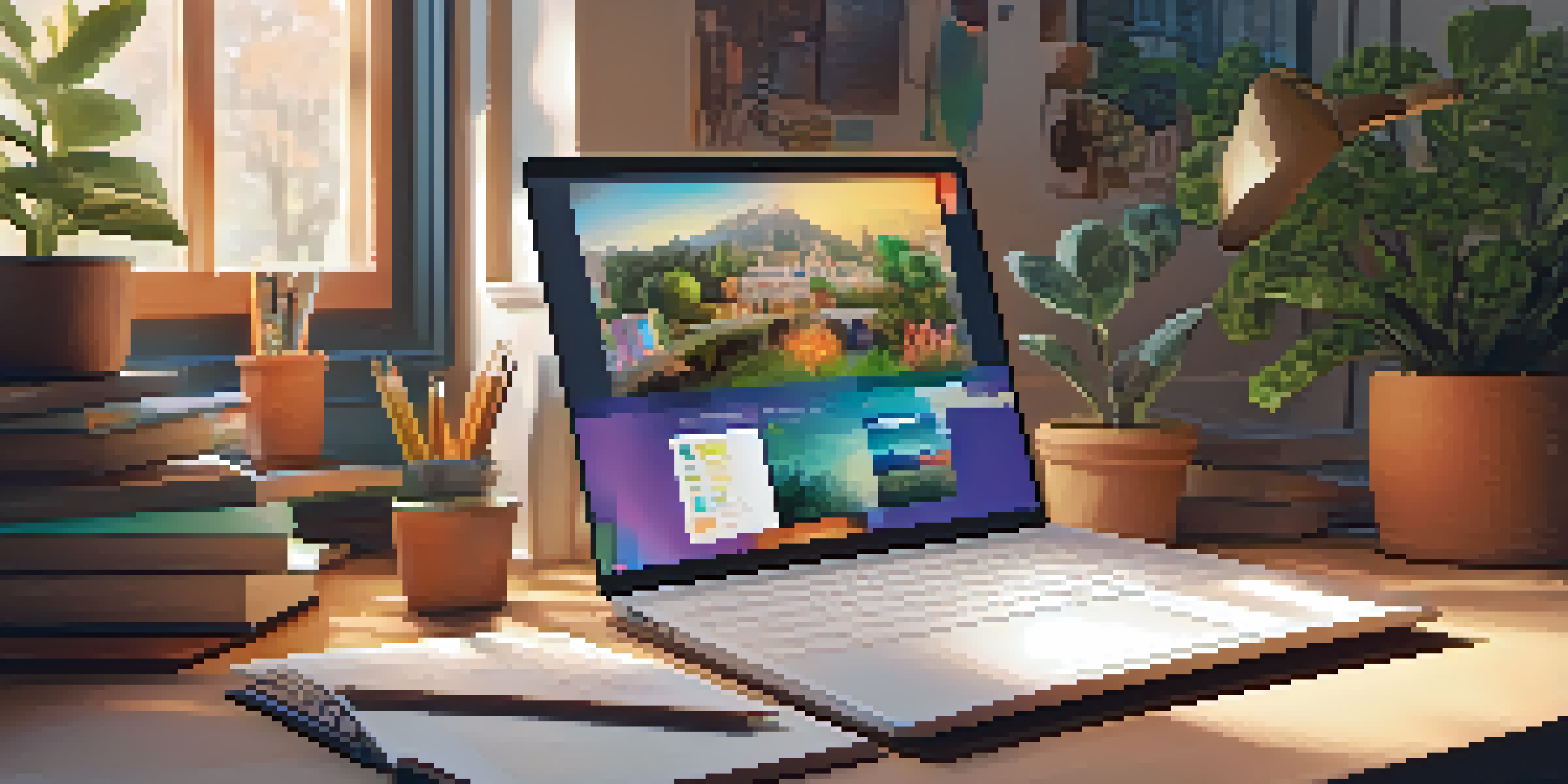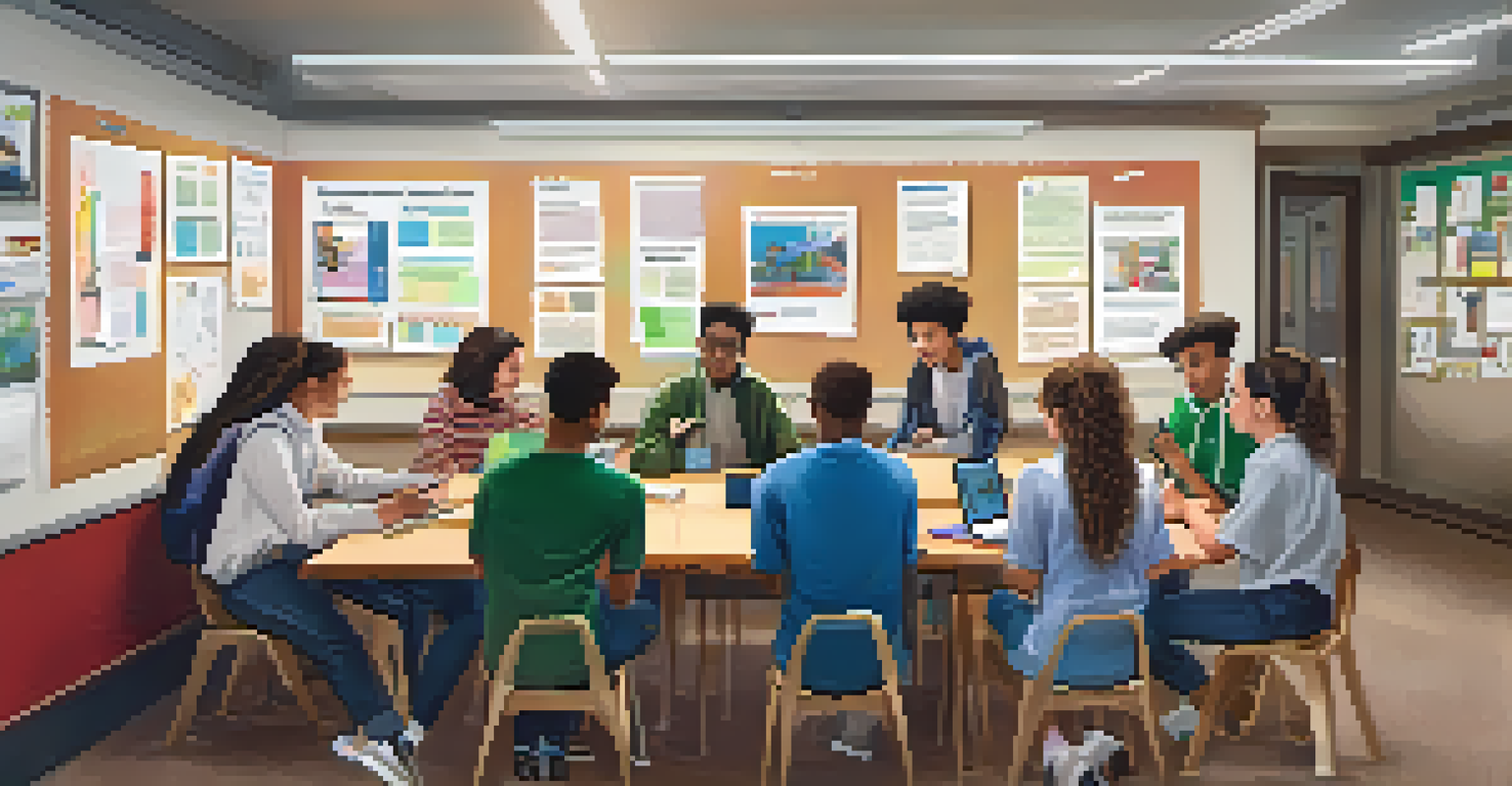How Digital Portfolios Foster Student Reflection and Growth

Understanding Digital Portfolios: A Modern Approach
Digital portfolios are online collections of a student's work, showcasing their skills, projects, and accomplishments over time. Unlike traditional portfolios, which can be cumbersome and static, digital versions offer dynamic and interactive elements that engage students and their audiences. This modern approach allows students to present their learning journey in a visually appealing and organized manner, making it easier for them to reflect on their progress.
The only way to do great work is to love what you do.
With tools like blogs, websites, or multimedia presentations, students can include a variety of content, such as essays, videos, and images. This flexibility not only encourages creativity but also allows students to curate their work in a way that highlights their strengths and interests. As they assemble their portfolios, they become more aware of their skills and areas for improvement.
Ultimately, digital portfolios serve as a powerful tool for self-assessment and growth, providing a platform for students to document their learning experiences. This process fosters a deeper understanding of their educational journey and encourages them to take ownership of their progress.
Encouraging Self-Reflection Through Documentation
One of the key benefits of digital portfolios is that they encourage students to engage in self-reflection. By documenting their work and experiences, students are prompted to consider what they’ve learned and how they’ve grown. This reflection helps them identify patterns in their learning, recognize their achievements, and set future goals.

For instance, as students add projects to their portfolio, they can write reflections on what they learned from each experience. This practice not only deepens their understanding but also makes their learning more meaningful. It’s like keeping a journal; when you look back, you can see how far you’ve come and what you’ve accomplished.
Digital Portfolios Enhance Learning
Digital portfolios provide a dynamic platform for students to showcase their work, encouraging creativity and self-reflection.
Moreover, this process of reflection can enhance critical thinking skills. Students learn to analyze their work, question their methodologies, and assess their outcomes, which are essential skills for their academic and professional futures.
Fostering a Growth Mindset in Students
Digital portfolios play a vital role in fostering a growth mindset among students. By showcasing a range of work, including both successes and failures, students learn that setbacks are part of the learning process. This perspective encourages them to embrace challenges and view them as opportunities for growth rather than obstacles.
Education is the most powerful weapon which you can use to change the world.
When students document their learning journey, they begin to see progress over time. For example, revisiting earlier projects allows them to acknowledge their development and improvement in specific areas. This visibility of growth is empowering and motivates students to continue pushing their boundaries.
Additionally, sharing their portfolios with peers and educators opens up opportunities for constructive feedback. This feedback not only reinforces their strengths but also provides insights into areas where they can improve, further enhancing their growth mindset.
Enhancing Goal-Setting and Personal Accountability
Digital portfolios give students a platform to set personal goals and track their achievements. By outlining specific objectives, such as mastering a new skill or completing a challenging project, students can create a roadmap for their learning journey. This clarity helps them stay focused and motivated, as they can visually see their progress unfold.
As they work towards these goals, portfolios serve as a reminder of their commitments and aspirations. This sense of accountability can be a powerful motivator, encouraging students to take responsibility for their own learning. They learn that reaching their goals requires effort, perseverance, and reflection.
Fostering a Growth Mindset
By documenting both successes and setbacks, digital portfolios help students embrace challenges and view them as opportunities for growth.
Moreover, regularly revisiting and updating their portfolios allows students to adjust their goals as needed. This adaptability is crucial for personal growth, as it helps them remain aligned with their evolving interests and aspirations.
Building Skills for Future Success
Engaging with digital portfolios helps students develop a range of skills that are crucial for their future. From technical skills like website creation and multimedia editing to soft skills such as self-assessment and critical thinking, the portfolio process equips students with tools that extend beyond the classroom. These skills are invaluable in today's digital workforce, where adaptability and creativity are key.
As they learn to curate and present their work, students also enhance their communication skills. They practice articulating their thoughts and experiences, which is essential for both academic and professional success. This ability to effectively convey their journey and achievements can set them apart in college applications or job interviews.
Furthermore, digital portfolios encourage collaboration and feedback from peers and educators, fostering teamwork skills. These interactions help students learn how to give and receive constructive criticism, preparing them for future collaborative environments.
Creating a Sense of Community and Connection
Digital portfolios can also foster a sense of community among students. By sharing their portfolios with classmates, they create an environment of support and encouragement. This sharing promotes a culture of collaboration, where students can learn from each other’s experiences and insights.
For instance, students can engage in portfolio review sessions, where they provide feedback on each other’s work. This not only enhances their critical thinking skills but also strengthens their understanding of diverse perspectives. It’s a shared learning experience that enriches their educational journey.
Skills for Future Success
Engaging with digital portfolios equips students with essential technical and soft skills that are vital for success in the modern workforce.
Moreover, when students showcase their portfolios to family and friends, it builds a bridge between their academic life and their personal networks. This connection reinforces the value of their education and encourages them to take pride in their achievements.
Reflecting on the Future: Lifelong Learning
Digital portfolios are not just a tool for academic reflection; they encourage a mindset of lifelong learning. As students collect and reflect on their work throughout their educational journey, they develop an intrinsic motivation to continue learning beyond the classroom. This habit of reflection can lead to continuous improvement throughout their lives.
By regularly updating their portfolios, students can track their evolving interests and skills. This adaptability is crucial in a rapidly changing world, where new technologies and ideas emerge constantly. They learn to see education as an ongoing process rather than a finite goal.

Ultimately, the practice of maintaining a digital portfolio instills a sense of curiosity and a desire for growth. It prepares students to face future challenges with confidence, knowing that they have the skills and mindset to adapt and succeed.